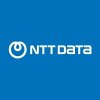


i
Filter interviews by
Hexaware Technologies Graduate Engineer Trainee (Get) Interview Questions and Answers
28 Interview questions
I am committed to driving success through dedication, continuous learning, and collaboration with my team and the company's vision.
I will consistently strive to exceed performance expectations, as demonstrated in my previous role where I improved project delivery times by 20%.
I am dedicated to continuous professional development, attending workshops and training to enhance my skills relevant to the company's needs...
I am a passionate engineering graduate with a strong foundation in technology and a keen interest in problem-solving and innovation.
Educational Background: Completed my Bachelor's in Engineering from XYZ University, specializing in Computer Science.
Technical Skills: Proficient in programming languages like Python, Java, and C++. Developed a web application as a final year project.
Internship Experience: Completed a...
Call by value passes a copy of the value, while call by reference passes the memory address of the value.
Call by value creates a new copy of the value being passed.
Call by reference passes the memory address of the value being passed.
Changes made to the parameter in call by value do not affect the original value.
Changes made to the parameter in call by reference affect the original value.
Program to check if a string is a palindrome or not.
Create a function to compare the original string with its reverse.
Ignore spaces and punctuation when checking for palindrome.
Example: 'racecar' is a palindrome, 'hello' is not.
A jagged array is an array of arrays where each element can be of different sizes.
Each sub-array can have a different number of elements
Useful for representing data structures like matrices or tables
Example: [['apple', 'banana'], ['orange', 'grape', 'kiwi']]
A program to reverse a string by iterating through the characters and appending them in reverse order.
Create a function that takes a string as input
Initialize an empty string to store the reversed string
Iterate through the characters of the input string in reverse order and append them to the empty string
Return the reversed string
Program to find second maximum number in an array of strings.
Convert array elements to integers for comparison.
Sort the array in descending order.
Return the second element in the sorted array.
Encapsulation, Inheritance, Polymorphism, Abstraction are the 4 pillars of OOP
Encapsulation: Bundling data and methods that operate on the data into a single unit. Example: Class in Java
Inheritance: Ability of a class to inherit properties and behavior from another class. Example: Subclass extending a superclass
Polymorphism: Ability to present the same interface for different data types. Example: Method overloadin...
Constructors are special methods in a class that are used to initialize objects.
Constructors have the same name as the class they belong to.
They are called automatically when an object is created.
Constructors can have parameters to initialize object properties.
They do not have a return type.
Example: public class Car { public Car(String color) { this.color = color; }}
Object Oriented Programming is a programming paradigm based on the concept of objects, which can contain data and code.
OOP focuses on creating objects that interact with each other to solve problems
Objects have attributes (data) and methods (functions)
Encapsulation, inheritance, and polymorphism are key principles of OOP
Examples of OOP languages include Java, C++, and Python
Hexaware Technologies Graduate Engineer Trainee (Get) Interview Experiences
47 interviews found
Primarily concentrate on communication.
How are you handling the situation?
(1 Question)
- Q1. Java, sql and oops concepts
(1 Question)
- Q1. One on one discussion
I applied via Campus Placement
Basics quand and logical apditude
Hard work vs smart work
(3 Questions)
- Q1. Self introduction
- Q2. Family background
- Q3. Very basic technical questions which is in your resume
Interview Preparation Tips
I applied via Campus Placement and was interviewed in Jun 2024. There were 3 interview rounds.
Quantitative, Analytical, Pseudocode, Technical MCQs
Traditional GD topics.
(3 Questions)
- Q1. Self introduction
- Ans.
I am a passionate engineering graduate with a strong foundation in technology and a keen interest in problem-solving and innovation.
Educational Background: Completed my Bachelor's in Engineering from XYZ University, specializing in Computer Science.
Technical Skills: Proficient in programming languages like Python, Java, and C++. Developed a web application as a final year project.
Internship Experience: Completed an int...
- Q2. What would be your commitment to the Company?
- Ans.
I am committed to driving success through dedication, continuous learning, and collaboration with my team and the company's vision.
I will consistently strive to exceed performance expectations, as demonstrated in my previous role where I improved project delivery times by 20%.
I am dedicated to continuous professional development, attending workshops and training to enhance my skills relevant to the company's needs.
I be...
- Q3. Why I need to hire you?
- Ans.
I bring a unique blend of skills, experience, and passion that aligns perfectly with your team's goals and values.
Proven track record of success in previous roles, such as increasing sales by 20% in my last position.
Strong problem-solving skills demonstrated through a project where I streamlined processes, saving the company 15% in operational costs.
Excellent teamwork and communication abilities, as shown by leading a ...
Interview Preparation Tips
Should posses Good communication skill and fluent in English.
I applied via Campus Placement and was interviewed in Sep 2023. There were 4 interview rounds.

Test 1 = (Aptitude) 70 MCQs from Quant, Logical and Verbal
Test 2 = (Domain-based) 30Questions from Pseudocode and Computer Fundamentals
Communication Round after Technical Round
MCQs based on Paragraphs, Audio transcript, Grammar
Voice/Audio Answer scenario based question (eg. Your Idol)
(11 Questions)
- Q1. Introduce Yourself
- Q2. Which year you are in?
- Q3. Tell me about your projects
- Q4. What languages do you know? and which one are you most comfortable with?
- Ans.
I am proficient in multiple programming languages, with a strong preference for Python due to its versatility and ease of use.
Python: I have used Python for data analysis and machine learning projects, utilizing libraries like Pandas and Scikit-learn.
Java: I am familiar with Java, having developed several applications using Java Spring framework for backend development.
C++: I have experience in C++ for systems programm...
- Q5. What is Object Oriented Programming?
- Ans.
Object Oriented Programming is a programming paradigm based on the concept of objects, which can contain data and code.
OOP focuses on creating objects that interact with each other to solve problems
Objects have attributes (data) and methods (functions)
Encapsulation, inheritance, and polymorphism are key principles of OOP
Examples of OOP languages include Java, C++, and Python
- Q6. Name 4 pillars of Object Oriented Programming
- Ans.
Encapsulation, Inheritance, Polymorphism, Abstraction are the 4 pillars of OOP
Encapsulation: Bundling data and methods that operate on the data into a single unit. Example: Class in Java
Inheritance: Ability of a class to inherit properties and behavior from another class. Example: Subclass extending a superclass
Polymorphism: Ability to present the same interface for different data types. Example: Method overloading in ...
- Q7. What are constructors?
- Ans.
Constructors are special methods in a class that are used to initialize objects.
Constructors have the same name as the class they belong to.
They are called automatically when an object is created.
Constructors can have parameters to initialize object properties.
They do not have a return type.
Example: public class Car { public Car(String color) { this.color = color; }}
- Q8. What is jagged array?
- Ans.
A jagged array is an array of arrays where each element can be of different sizes.
Each sub-array can have a different number of elements
Useful for representing data structures like matrices or tables
Example: [['apple', 'banana'], ['orange', 'grape', 'kiwi']]
- Q9. Write a program to check whether string is palindrome or not?
- Ans.
Program to check if a string is a palindrome or not.
Create a function to compare the original string with its reverse.
Ignore spaces and punctuation when checking for palindrome.
Example: 'racecar' is a palindrome, 'hello' is not.
- Q10. Write a program to reverse a string eg. Hello World to olleh dlrow
- Ans.
A program to reverse a string by iterating through the characters and appending them in reverse order.
Create a function that takes a string as input
Initialize an empty string to store the reversed string
Iterate through the characters of the input string in reverse order and append them to the empty string
Return the reversed string
- Q11. Write a program to find second maximum number in an array.
- Ans.
Program to find second maximum number in an array of strings.
Convert array elements to integers for comparison.
Sort the array in descending order.
Return the second element in the sorted array.
(4 Questions)
- Q1. Introduce yourself
- Q2. Tell me about your family background
- Q3. Are you willing to relocate?
- Q4. Any further questions?
Interview Preparation Tips
- Object Oriented Programming
- SQL
- Java
- Core Java
- C++
There maybe sectional cutoff so don't just focus on one section and completely miss-out on others. Make sure to attempt fairly good in all sections.
All pseudocode questions will consist of LOGICAL operators ( Logical AND, OR, XOR ) so make sure to get idea about them
Skills evaluated in this interview
I applied via Campus Placement and was interviewed in Mar 2024. There were 4 interview rounds.
Easy and online duration 2 Hours
(1 Question)
- Q1. Basic communication on AI platform
(1 Question)
- Q1. TR round : Your domain questions and project
(1 Question)
- Q1. Basic HR questions
Interview Preparation Tips
I applied via Campus Placement
(3 Questions)
- Q1. What is Object Oriented Programming?
- Ans.
Object Oriented Programming is a programming paradigm that organizes code into objects with properties and behaviors.
Encourages modular and reusable code
Focuses on data encapsulation and abstraction
Supports inheritance and polymorphism
Examples: Java, C++, Python
- Q2. Diff b/w call by value and call by reference?
- Ans.
Call by value passes a copy of the value, while call by reference passes the memory address of the value.
Call by value creates a new copy of the value being passed.
Call by reference passes the memory address of the value being passed.
Changes made to the parameter in call by value do not affect the original value.
Changes made to the parameter in call by reference affect the original value.
- Q3. What is the difference b/w complie time and run time polymorphism?
- Ans.
Compile time polymorphism is resolved at compile time, while run time polymorphism is resolved at run time.
Compile time polymorphism is achieved through function overloading and operator overloading.
Run time polymorphism is achieved through function overriding and virtual functions.
Compile time polymorphism is faster as the resolution is done at compile time.
Run time polymorphism allows dynamic binding of functions bas...
Skills evaluated in this interview
I appeared for an interview in Oct 2024, where I was asked the following questions.
- Q1. Can you provide a self-introduction?
- Q2. SUIT WORK IS OK
- Q3. What is your hobby?
Interview Preparation Tips
(2 Questions)
- Q1. Project details
- Q2. Tell about your Family
- Ans.
I come from a close-knit family of four, including my parents and younger sister.
Family of four: parents and younger sister
Close-knit and supportive
Parents have always encouraged me to pursue my education and career goals
Interview Preparation Tips
It contains quants,verbal,reasoning and tech
Real time topics only they provide
I applied via Campus Placement and was interviewed before Sep 2023. There were 3 interview rounds.
Medium Level round consist of Quant Reasoning Verbal Technical
(2 Questions)
- Q1. Question were asked related to ooops and other technical questions
- Q2. Asked me to do online program whilw sharing the screen
(2 Questions)
- Q1. What should we hire you
- Ans.
I am a highly motivated and skilled engineer with a strong academic background and a passion for learning and problem-solving.
I have a solid understanding of engineering principles and have excelled in relevant coursework and projects.
I am a quick learner and have a strong work ethic, always willing to go the extra mile to achieve results.
I have excellent communication and teamwork skills, which are essential for colla...
- Q2. What do you want to join hexaware
- Ans.
I want to join Hexaware because of its reputation for innovation and growth opportunities.
Hexaware has a strong focus on innovation and cutting-edge technologies.
The company offers excellent growth opportunities for career development.
I am impressed by Hexaware's commitment to employee development and training programs.
What people are saying about Hexaware Technologies





Hexaware Technologies Interview FAQs
Some of the top questions asked at the Hexaware Technologies Graduate Engineer Trainee (Get) interview -
The duration of Hexaware Technologies Graduate Engineer Trainee (Get) interview process can vary, but typically it takes about 2-4 weeks to complete.
Tell us how to improve this page.
Hexaware Technologies Interviews By Designations
- Hexaware Technologies Graduate Engineer Trainee (Get) Interview Questions
- Hexaware Technologies Software Engineer Interview Questions
- Hexaware Technologies Executive Interview Questions
- Hexaware Technologies Senior Software Engineer Interview Questions
- Hexaware Technologies Software Developer Interview Questions
- Hexaware Technologies System Analyst Interview Questions
- Hexaware Technologies Associate Software Engineer Interview Questions
- Hexaware Technologies Graduate Trainee Interview Questions
- Show more
Overall Interview Experience Rating
based on 26 interview experiences
Difficulty level
Duration
Graduate Engineer Trainee (Get) Interview Questions from Similar Companies

Hexaware Technologies Graduate Engineer Trainee (Get) Reviews and Ratings
based on 11 reviews
Rating in categories
|
Senior Software Engineer
3.8k
salaries
| ₹8.3 L/yr - ₹16.1 L/yr |
|
Software Engineer
3.3k
salaries
| ₹4 L/yr - ₹9 L/yr |
|
System Analyst
3k
salaries
| ₹12.4 L/yr - ₹22 L/yr |
|
Technical Architect
2.2k
salaries
| ₹17.2 L/yr - ₹31 L/yr |
|
Senior Executive
2.2k
salaries
| ₹1.8 L/yr - ₹5.1 L/yr |

Cognizant

TCS

DXC Technology

Mphasis
- Home >
- Interviews >
- Hexaware Technologies Interview Questions













